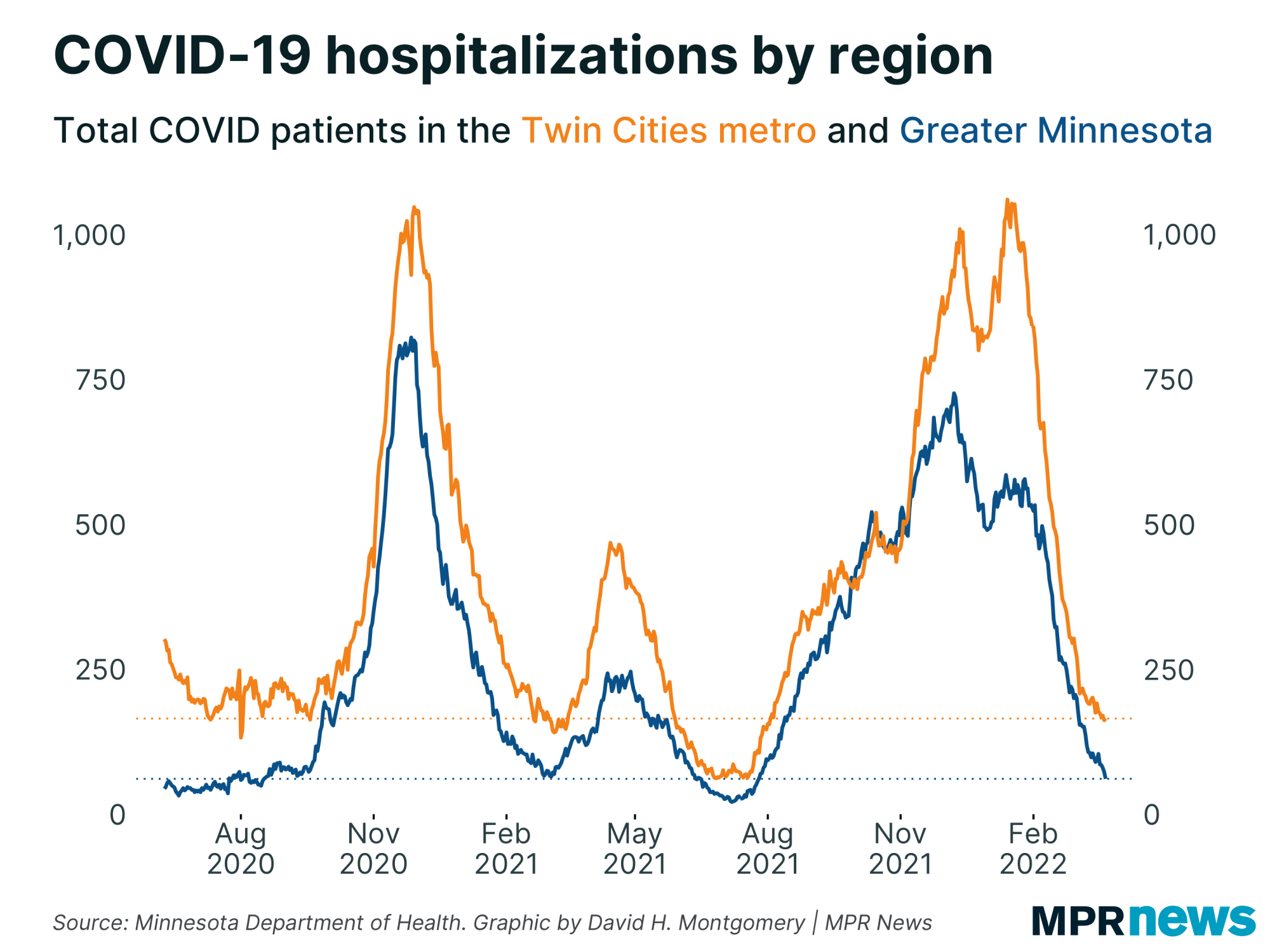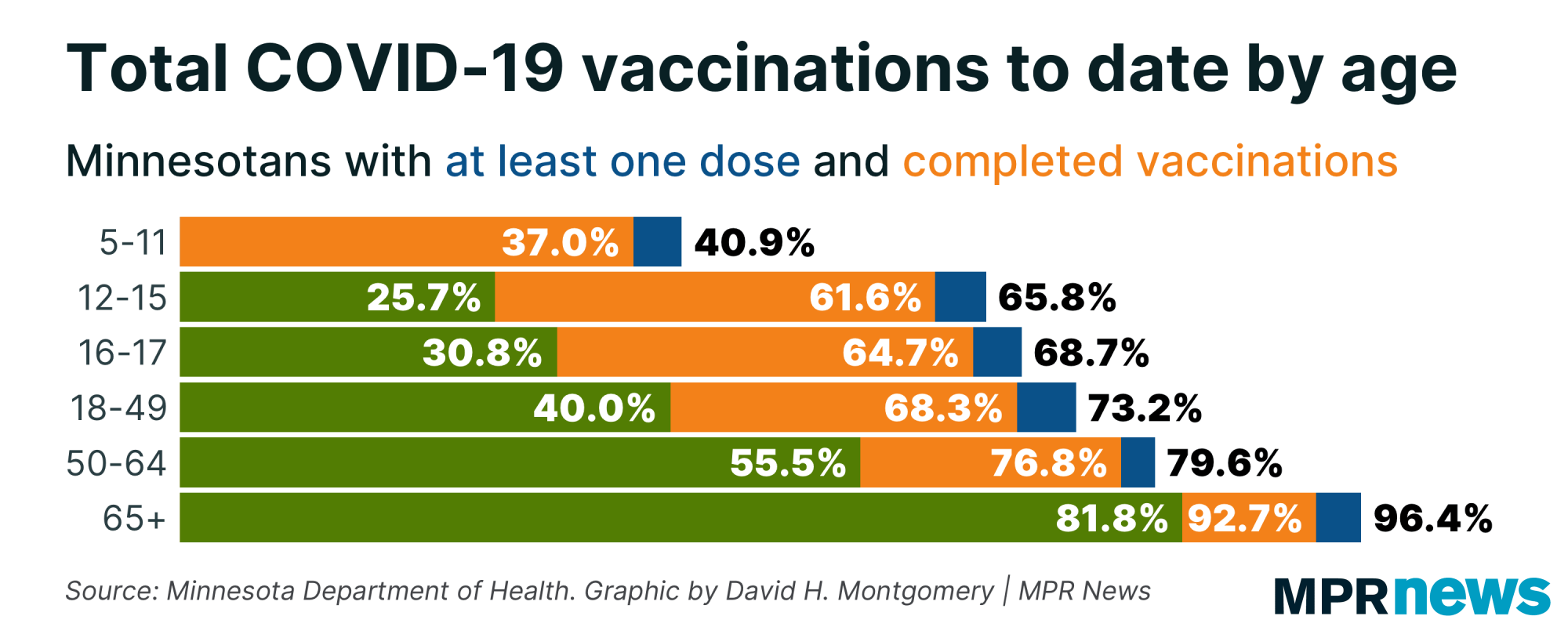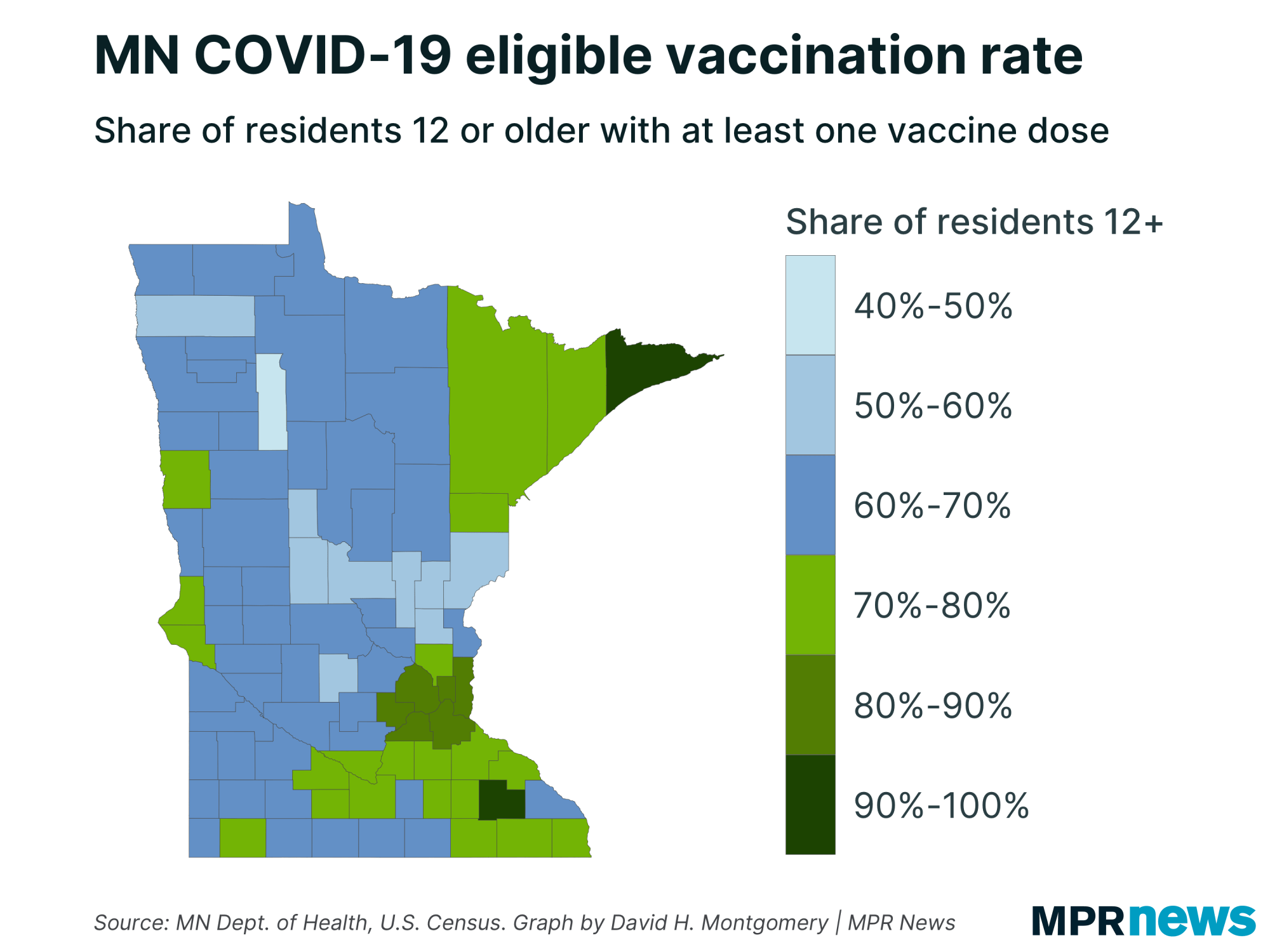COVID-19 in MN: State readies booster push; hospital needs, deaths climb

Go Deeper.
Create an account or log in to save stories.
Like this?
Thanks for liking this story! We have added it to a list of your favorite stories.
3 things to know:
State tops 9,000 pandemic deaths
1,348 currently hospitalized, a 2021 high; 32,008 known, active cases
74.5 percent of residents 12 and older with at least 1 vaccine shot
Updated: 7:45 p.m.
COVID-19 is ratcheting up the pressure on hospitals as a summer-fall surge continues to pummel Minnesota.
Key metrics are at or near their highest levels since December with counts rising rapidly. The rate of COVID-19 tests coming back positive topped 10 percent Tuesday, according to MPR News calculations. That’s twice the rate officials find concerning — a key signal the virus’ spread is accelerating.
The state’s concerned enough about the current situation that officials intend to move ahead this week to offer vaccine booster shots to any eligible Minnesotan who wants one, whether or not federal officials expand eligibility, Minnesota Health Commissioner Jan Malcolm told reporters Tuesday.
It appears federal officials are prepared to open the door wider to boosters. Late Tuesday evening, NPR reported that the Food and Drug Administration this week is expected to announce an emergency authorization for all adults to get the Pfizer booster shot.
Turn Up Your Support
MPR News helps you turn down the noise and build shared understanding. Turn up your support for this public resource and keep trusted journalism accessible to all.
Minnesota is now the fastest growing hot spot in the country based on numbers of cases per 100,000 people, Malcolm said. “We’re all tired of this pandemic but it's not even close to over.”
Asked why circumstances have worsened so much lately in Minnesota, Malcolm said the picture wasn’t clear but that waning immunity from vaccine shots administered earlier in the year played a role, along with people moving indoors with the weather and the highly contagious nature of the virus’ delta variant.
Hospitalizations are especially concerning right now. Bed counts that fell below 100 in mid-July jumped in the late fall; 1,348 people are hospitalized now with COVID — the highest count all year — with 307 needing intensive care.
Hospital executives across the state say COVID and other needs are overwhelming short-staffed care centers.
While overall COVID hospital needs are still below the worst of the 2020 surge, this wave is complicated by the fact that hospitals this time are seeing more patients needing care for other illnesses and people who delayed getting care over the past year and a half.

Later Tuesday, Gov. Tim Walz said the state would use emergency federal funds to address hospital staffing shortages and emergency room overcrowding that would “provide relief for long-term care, and fund hospital surge sites.”
State officials have been pleading with Minnesotans to take care against spreading the disease as Thanksgiving and other year-end celebrations approach and children return home from college.
There’s also rising concern that schools, especially elementary schools where children have been too young to vaccinate, may be helping accelerate community spread.
Driven by the highly contagious delta variant, the entire state except for Lake of the Woods County shows a high level of COVID-19 transmission, according to the Centers for Disease Control and Prevention.
The current surge is being driven largely by rising case counts in greater Minnesota.

People between 30-49 years old make up the age group with the most new cases right now but cases among school-age children are also a concern. Weekly positive cases in school settings is the highest it has been in almost four months, officials said Tuesday.

The newest numbers were especially grim given some prior data delays. Minnesota averaged about 4,500 new cases a day in the last seven reporting days. The count of known, active cases remained high at 32,008, although that was down slightly from Monday’s 2021 high.

The state’s seen its average daily case count jump 67 percent the past two weeks.
The state's death toll stands at 9,047, including 51 deaths newly reported on Tuesday. Deaths typically follow a surge in cases and hospitalizations. In past COVID-19 waves, it’s been the last of the key metrics to improve.

Minnesota seems better positioned now than during its fall 2020 and spring 2021 spikes. More than 74 percent of state residents age 12 and older have received at least one vaccination shot, with nearly 71 percent now completely vaccinated.

The state is seeing progress in getting booster shots into Minnesotans who’ve already been vaccinated.
Malcolm on Tuesday said the state is keeping close watch on federal discussions around booster shots for all people, and that Minnesota is ready to move ahead on boosters for all eligible MN adults this week if the feds don't approve them first.

However, the struggle continues to get first shots into more Minnesotans. Wide gaps remain in the vaccination rates among regions and counties.

Unvaccinated far more likely to be hospitalized, die
State data offers striking evidence of vaccine effectiveness in Minnesota.
Adjusted for age, unvaccinated Minnesotans have been about four times more likely to get COVID-19 than those who’ve been vaccinated — and 16 times more likely to be hospitalized or die from it.
The shots, of course, don’t insulate people completely from getting COVID-19.
Minnesota Health Department figures released Friday show about 40 percent of Minnesota’s COVID-19 cases among people 12 or older were breakthroughs — people previously inoculated — as of a month ago, the most recent available data.
The share of cases, hospitalizations and deaths that are breakthroughs has risen steadily in recent months. However, health officials say this isn’t surprising or even alarming.
More than 70 percent of Minnesotans 12 or older are fully vaccinated, which means as the disease has spread in recent months the virus has encountered plenty of vaccinated people.
Listen to Tuesday’s Minnesota Health Department briefing on the pandemic:


